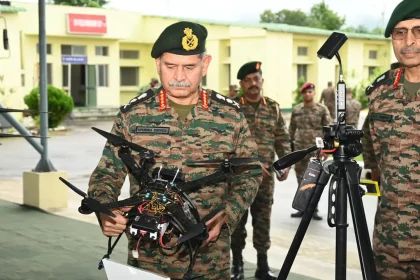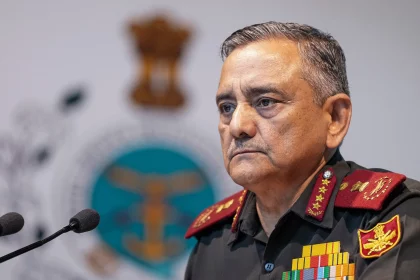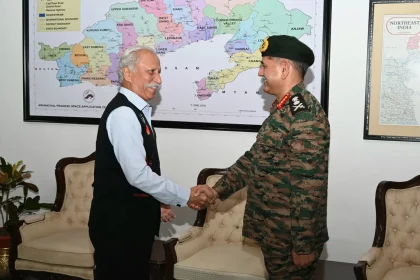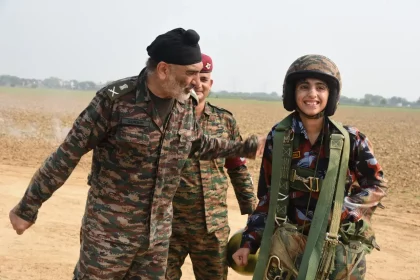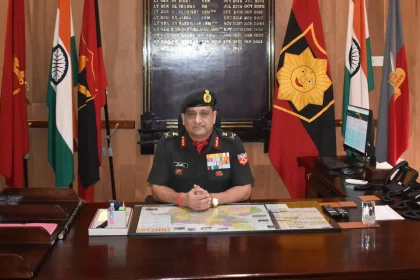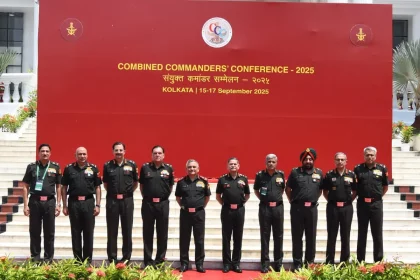General Upendra Dwivedi Visits Drone Excellence Centre at Likabali Military Station
The integration of drones is seen as a transformative step, enabling enhanced surveillance, reconnaissance, logistics, and even medical evacuation missions.
Why Operation Sindoor Was Planned at 1 AM: CDS Gen Anil Chauhan Explains
India’s midnight precision strikes on May 7 avoided civilian casualties, marked a new era in multi-domain warfare.
General Upendra Dwivedi Meets Arunachal Pradesh Governor Lt Gen KT Parnaik During Spear Corps Visit
The COAS further assured the Army’s commitment to strengthening preparedness along the eastern frontiers.
NCC Cadets Undertake Para Jump at Army Airborne Training School Agra
The successful completion of the Para Jump not only awards the cadets the prestigious Para-Wings to wear on their uniforms.
Lt General Vivek Kashyap Takes Charge as Commandant of OTA Gaya
OTA Gaya is one of the premier pre-commissioning institutions of the Indian Army.
India to Establish First-Ever Joint Military Stations, Merge Defence Education Wings
This move is expected to optimise manpower, reduce duplication of resources, and strengthen joint operations.

